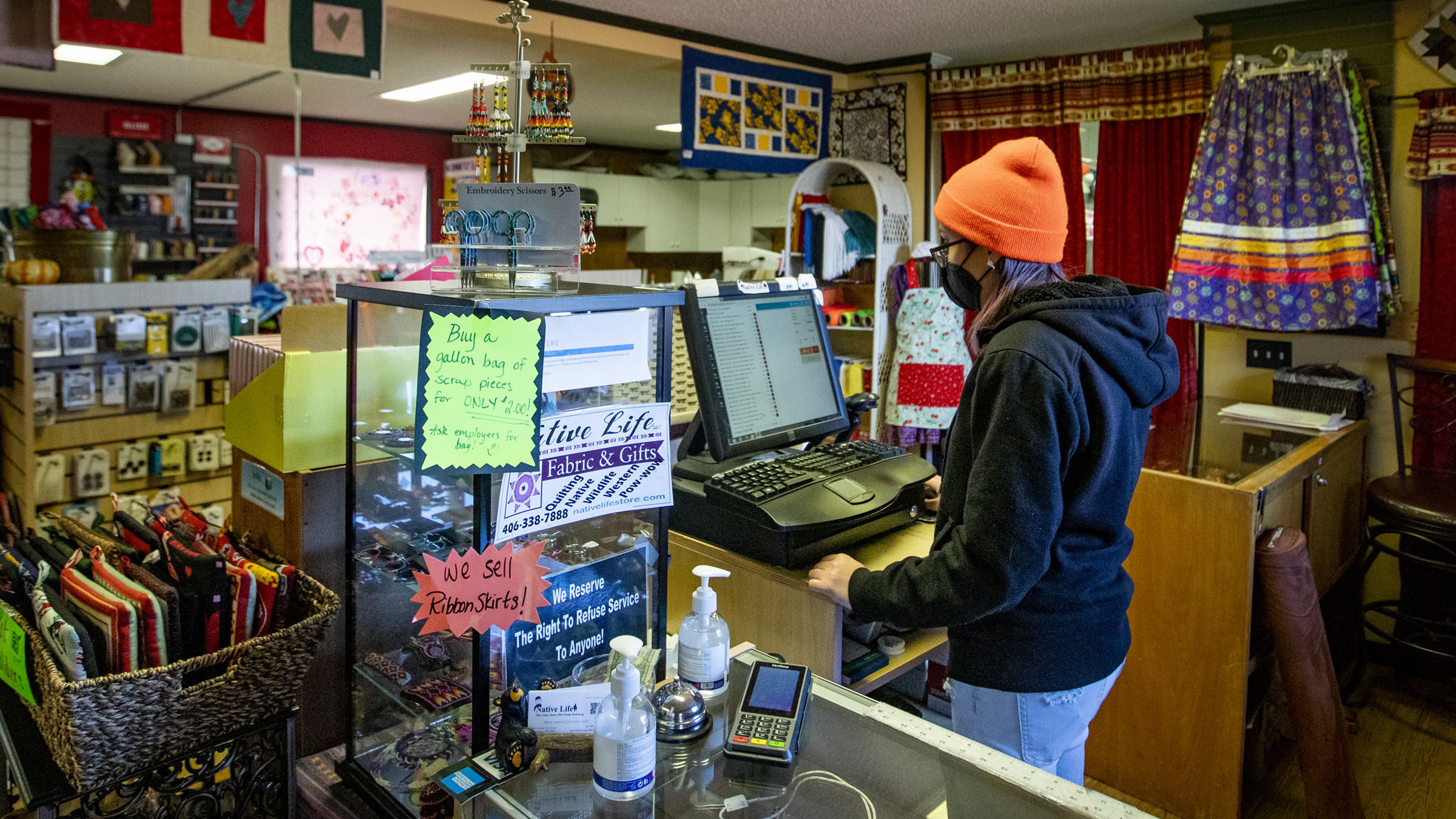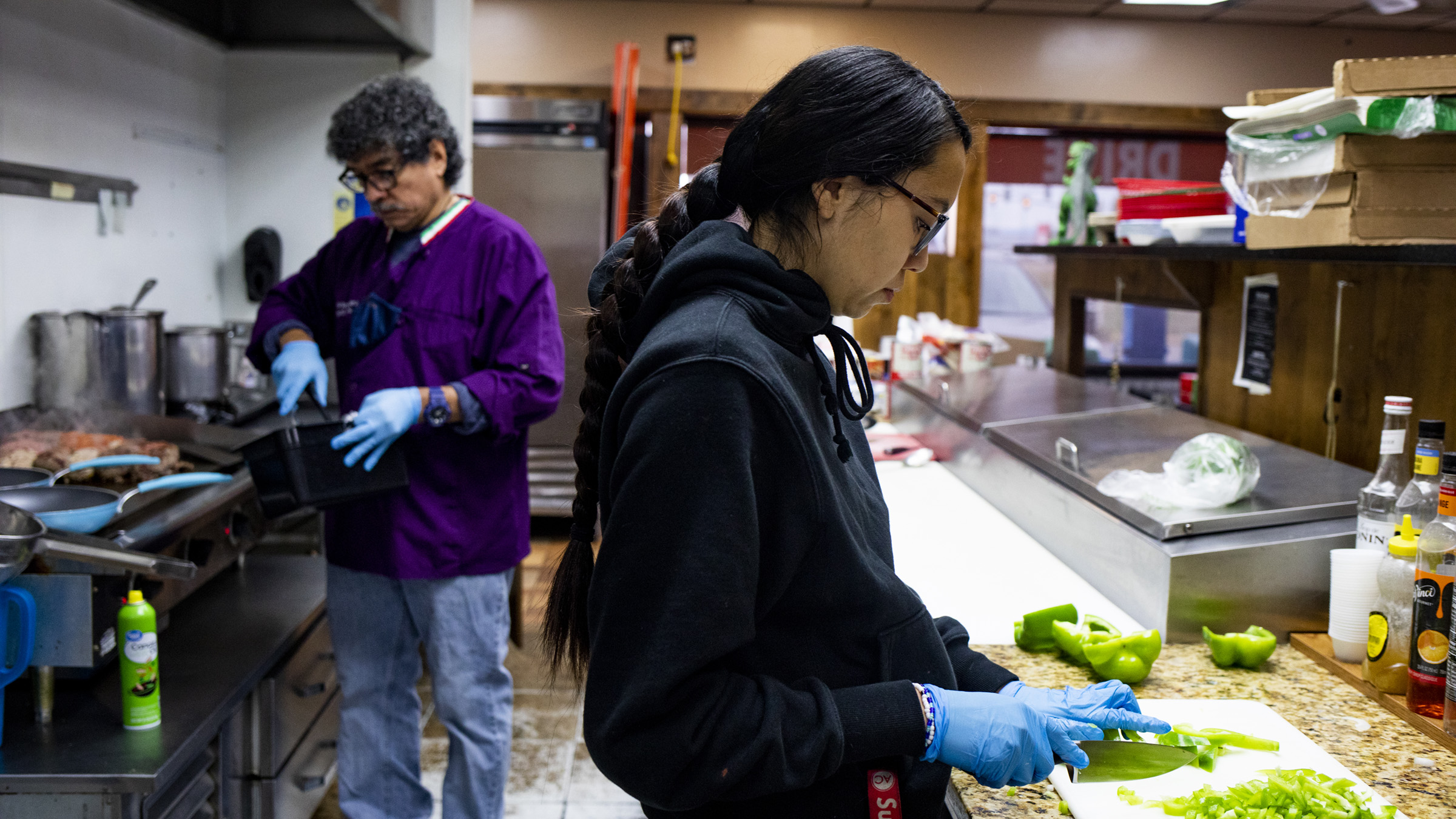Small businesses are essential to the U.S. economy but face substantial challenges in weathering downturns and finding the resources to expand. Understanding the ways in which they access credit is therefore critical. The 33 million small businesses nationwide have diverse needs and experience a wide variety of situations and opportunities. One subset of these small businesses—those that are Native-owned, which number around 49,0001 —has unique, understudied challenges in accessing credit. In this article, using new data from the Federal Reserve’s Small Business Credit Survey (SBCS), we explore some of those challenges and characterize the sources and amounts of financing Native-owned businesses tend to access. We find that non-Native entrepreneurs tend to receive more approvals for the financing they apply for than Native entrepreneurs—a reality that highlights the importance of institutions that specialize in providing technical assistance and other business supports in Indian Country.
Capturing Native-specific data in the SBCS
The SBCS is a national survey of small businesses, taken annually since 2010 by a convenience sample2 of firms with fewer than 500 employees. The survey asks core questions about the credit-seeking experiences of small businesses as well as questions about firm performance and challenges. Each year, additional module questions are included to provide a snapshot of special-interest topics.
In 2022, the most recent year for which SBCS data are available, Native representation in the survey data was the highest it has ever been, at 405 out of 13,910 respondents, or nearly 3 percent of the total sample. For the first time, SBCS reports were able to include American Indian or Alaska Native-owned businesses in analyses that were broken down by demographic categories. And during the survey questionnaire’s development, the Center for Indian Country Development (CICD) had the opportunity to add a module that would specifically explore the credit experiences of Native-owned small businesses. CICD members developed module questions, vetted them with a small group of tribal leaders, and ultimately selected eight questions tailored to Native-owned businesses’ unique circumstances. Between the breakdown by demographics and the new Native-specific module, the SBCS in 2022 more accurately and precisely captured the experiences of Native-owned businesses than ever before.
What’s driving the challenges
The demographic breakdown of SBCS results enabled new comparisons between Native-owned businesses and non-Native-owned businesses. As shown in Figure 1, SBCS respondents reported experiencing a range of financial challenges in the 12 months prior to taking the survey. This was true across all types of small business, whether Native-owned3 or non-Native-owned, and whether employers—that is, having at least one employee in addition to the owner—or non-employers.4 A majority of all types of small business reported struggling with the increasing costs of goods and services. Native-owned employer businesses were more likely than other types of establishment (that is, non-Native-owned or non-employer) to report increasing costs as a challenge, at 83 percent. Relatedly, Native-owned employer businesses were most likely to report experiencing challenges with paying operating expenses and with credit availability, at 70 percent and 40 percent, respectively. Native-owned non-employer businesses were also likely to report challenges with credit availability, at 37 percent.
Credit scores are a particularly important determinant of access to credit. For various reasons—such as the business’s history being relatively short for establishing a business credit score,5 or the owner not separating out business and personal expenses—small businesses often rely on the business owner’s personal credit score. Figure 2 plots the distribution of business owners’ personal credit scores, broken out by establishment type. It shows that Native business owners tend to have lower credit scores than non-Native business owners, suggesting that credit scores disproportionately present challenges in access to financing for Native-owned small businesses. The credit score gaps are particularly large for non-employer establishments.6 Whereas only 13 percent of non-Native-owned non-employer businesses rely on personal credit scores below 620, 22 percent of Native-owned non-employer businesses rely on personal credit scores below 620. This all points to the potential importance of two types of intervention: first, raising Native small business owners’ credit scores, and second, looking beyond conventional credit scoring.
Another potential access-to-credit challenge for Native-owned businesses is distance from financial institutions. Previous research has found that there is a lack of financial institutions or services on or within 30 miles of reservations, with clients claiming that this distance makes it harder to form relationships with banks and increases the cost of financing new businesses or obtaining mortgages. To better understand this aspect of credit access, the 2022 SBCS module administered only to Native business owners asked about distance to a respondent’s primary financial services provider. As shown in Figure 3, Native-owned non-employer businesses tend to be located closer to their primary financial services provider than Native-owned employer businesses. Approximately 40 percent of Native-owned non-employer businesses and 47 percent of Native-owned employer businesses, respectively, reported that their financial services provider was more than three miles away. More than 20 percent of all Native-owned employer establishments were between 11 and 50 miles from their primary provider.
Sources and amounts of credit
The SBCS data tell us about not only the challenges Native-owned businesses face but also the realities of where and how Native-owned businesses access their financing. As Figure 4 shows, the majority of Native-owned employers, 64 percent, have their primary account with a large bank, whereas Native-owned non-employers are approximately equally likely to have their primary account with a credit union, a large bank, or a small bank, at 30 percent for each of those institution types. Additional analysis using the SBCS data (not shown) indicates that Native-owned non-employers tend to utilize small banks and credit unions when the business is young and then graduate to larger banks once the business is more established.
When seeking financing, Native-owned businesses are much more likely than non-Native-owned businesses to apply for small amounts of credit, which the SBCS defines as less than $25,000: 66 percent of Native-owned non-employers and 34 percent of Native-owned employers apply for small amounts, compared to 43 percent of non-Native-owned non-employers and 19 percent of non-Native-owned employers. Native-owned businesses are also less likely to receive the financing they apply for than non-Native-owned businesses. Among non-employer establishments, 45 percent of Native-owned small businesses report that they received none of the financing for which they applied in the past 12 months, compared with only 36 percent of non-Native-owned businesses. While employers tend to be more successful in their applications overall, SBCS data also indicate a gap in financing: 39 percent of non-Native-owned employers received 100 percent of the financing for which they applied, compared with only 23 percent of Native-owned employers.
Improving access to credit for Native businesses
The pattern of credit challenges for Native businesses raises the questions of what is currently being done to make credit more readily available and what more could be done. Prior CICD research focused on two important institutions: Small Business Development Centers (SBDCs) and Native Community Development Financial Institutions (Native CDFIs). SBDCs work with Native business owners to develop their skills and find other support to help their businesses succeed. As with lenders, SBDCs are often located quite far from Native-owned businesses, and making their services more readily accessible could help Native-owned businesses flourish. Native CDFIs provide credit in Indian Country and, according to a body of CICD research, help raise Native credit scores, provide a more flexible and personalized method of lending to Native communities, and offer financial counseling services to help reduce rates of loan default. Finding ways to improve upon and extend these lending activities would be an important part of addressing the credit challenges identified in our analysis.
Endnotes
1 According to the most recent data from the U.S. Census Bureau’s Annual Business Survey, there were 48,582 American Indian and Alaska Native-owned businesses in 2021.
2 A convenience sample is a group of research participants who are selected through their accessibility to the researchers instead of through a randomized process. The SBCS sample is reweighted to correspond with U.S. Census Bureau data on the small business population.
3 We classify a business as a Native-owned business if it is owned by a tribal entity or has more than 50 percent ownership by individuals identifying as Native American, Alaska Native, or Native Hawaiian, either alone or in combination with other races. Note that survey respondents are only asked if they identify as Native Hawaiian if they first indicate that they are Asian or Pacific Islander and that their business is located in Hawaii. Our definition of a Native-owned business is more comprehensive than the definitions adopted in other publications using the SBCS data. For example, the SBCS chartbook on race and ethnicity classifies a business as Native if it is more than 50 percent owned by individuals identifying as American Indian, Alaska Native, or either of those two race categories in combination with White. Due to the differing definitions, our results may vary from those of other SBCS analyses.
4 According to the 2022 SBCS data, approximately 42 percent of all businesses are non-employers but approximately 47 percent of Native-owned businesses are non-employers.
5 Business credit scores are a type of credit score specific to a business that demonstrates whether the business is expected to be able to fulfill financial obligations.
6 SBCS data also contain information about business credit scores, and although sample sizes are smaller for this measure, similar patterns emerge in the business credit score distributions. When credit scores are not reported, those responses are excluded from Figure 2.







